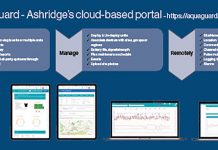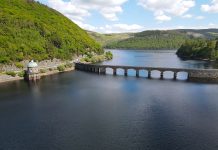Have you ever thought “What happened to the water I used this morning: what journey did it go on? More importantly: if there was a problem on the way, how would anyone know?
We are still some way from achieving a total real-time monitoring solution, however on the journey to achieve this ‘utopia’, when clients have a sewer monitoring requirement there is a tendency to focus on the technology delivering the data rather than the final output (the data itself) and how this will be utilised. Focus is generally on the latest equipment available and how its shortcomings (e.g. battery life, sensor performance) impact on the cost. This can lead to an attempt to predict what the next innovation will be and how it will overcome those shortcomings, ultimately adopting this technology as the new panacea.
While technology is clearly important, at IETG we believe that focussing on the ultimate outcome and objective produces the best solution.
To make this step-change in real-time wastewater network monitoring, and move towards a truly collaborative and integrated platform, we do not recommend adopting the latest technology, gadget or software interface as a matter of course – this is only one part of a bigger picture which we believe involves a wider collaborative approach than is currently operated across the supply chain (bringing the sum of the parts together).
IETG has already taken steps to embark on this approach by collaborating with key stakeholders. Our aim is to provide the best project-managed solution and work with those specialists, manufacturers and R&D committees to adapt current technology to best-fit the challenge and help achieve the vision to move to a coordinated real-time platform.
Further investment in the mobile network and developments in remote telemetry will improve coverage and increase rates of data transfer. Those improvements, supported by advances in extended battery life which are already starting to filter through to the market place, will allow solution providers to offer something closer to real-time data collection even in non-powered locations alongside their traditional data logging services.
Rather than being bound by a one-size-fits-all approach to equipment (“this is our product”), utilising the most appropriate unit for each task should lead to a reduction in the overall cost, enabling wider geographical deployment and a move toward long-term monitoring: providing a ‘Sat Nav’ (visual) perspective of the infrastructure to identify areas of concern. This should encourage customers and providers alike to commit to working with all stakeholders to help resolve technical challenges and deliver ‘affordability’ alongside increased customer service.
The components for this “data only” approach either exist, but need pulling together, or need adapting to address the challenges and achieve the customer’s specific goal, with the incentive of longer term collaborative partnerships and the associated benefits:
• A managed (less reactive) response
• Efficient focus of resources
• Increased visibility and understanding of the operating network enabling a proactive response
• Improve compliance and ‘predictive ability’
• Affordability & reduced overall operating costs (including reducing fines and legal expenses for non-compliance)
• Increased customer satisfaction
We believe that the future is about Data Provision and how it is utilised; a “data only” approach, where the responsibility isn’t for installing and maintaining the latest technology, but for providing consistent critical and timely information through the right technology, to enable our clients and delivery partners to make proactive decisions before problems are reported by the customer.
In a world of increasing technological development and higher customer expectations, the challenge we need to address is to solve problems before they cause concern.
So, what did happen to the water you used this morning?
Ian Edwards
Managing Director, IETG Limited







